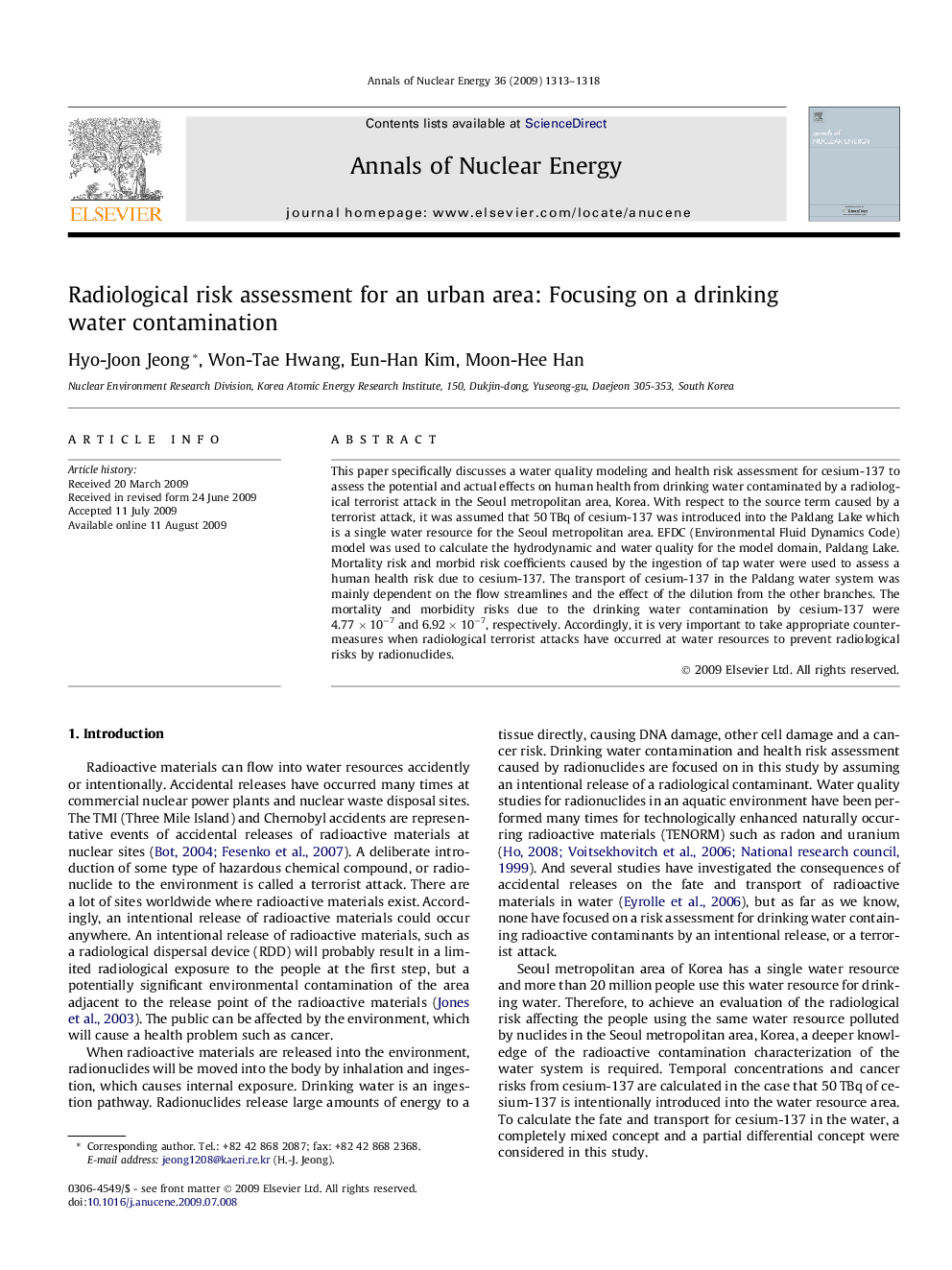| Article ID | Journal | Published Year | Pages | File Type |
|---|---|---|---|---|
| 1729956 | Annals of Nuclear Energy | 2009 | 6 Pages |
Abstract
This paper specifically discusses a water quality modeling and health risk assessment for cesium-137 to assess the potential and actual effects on human health from drinking water contaminated by a radiological terrorist attack in the Seoul metropolitan area, Korea. With respect to the source term caused by a terrorist attack, it was assumed that 50Â TBq of cesium-137 was introduced into the Paldang Lake which is a single water resource for the Seoul metropolitan area. EFDC (Environmental Fluid Dynamics Code) model was used to calculate the hydrodynamic and water quality for the model domain, Paldang Lake. Mortality risk and morbid risk coefficients caused by the ingestion of tap water were used to assess a human health risk due to cesium-137. The transport of cesium-137 in the Paldang water system was mainly dependent on the flow streamlines and the effect of the dilution from the other branches. The mortality and morbidity risks due to the drinking water contamination by cesium-137 were 4.77Â ÃÂ 10â7 and 6.92Â ÃÂ 10â7, respectively. Accordingly, it is very important to take appropriate countermeasures when radiological terrorist attacks have occurred at water resources to prevent radiological risks by radionuclides.
Related Topics
Physical Sciences and Engineering
Energy
Energy Engineering and Power Technology
Authors
Hyo-Joon Jeong, Won-Tae Hwang, Eun-Han Kim, Moon-Hee Han,
